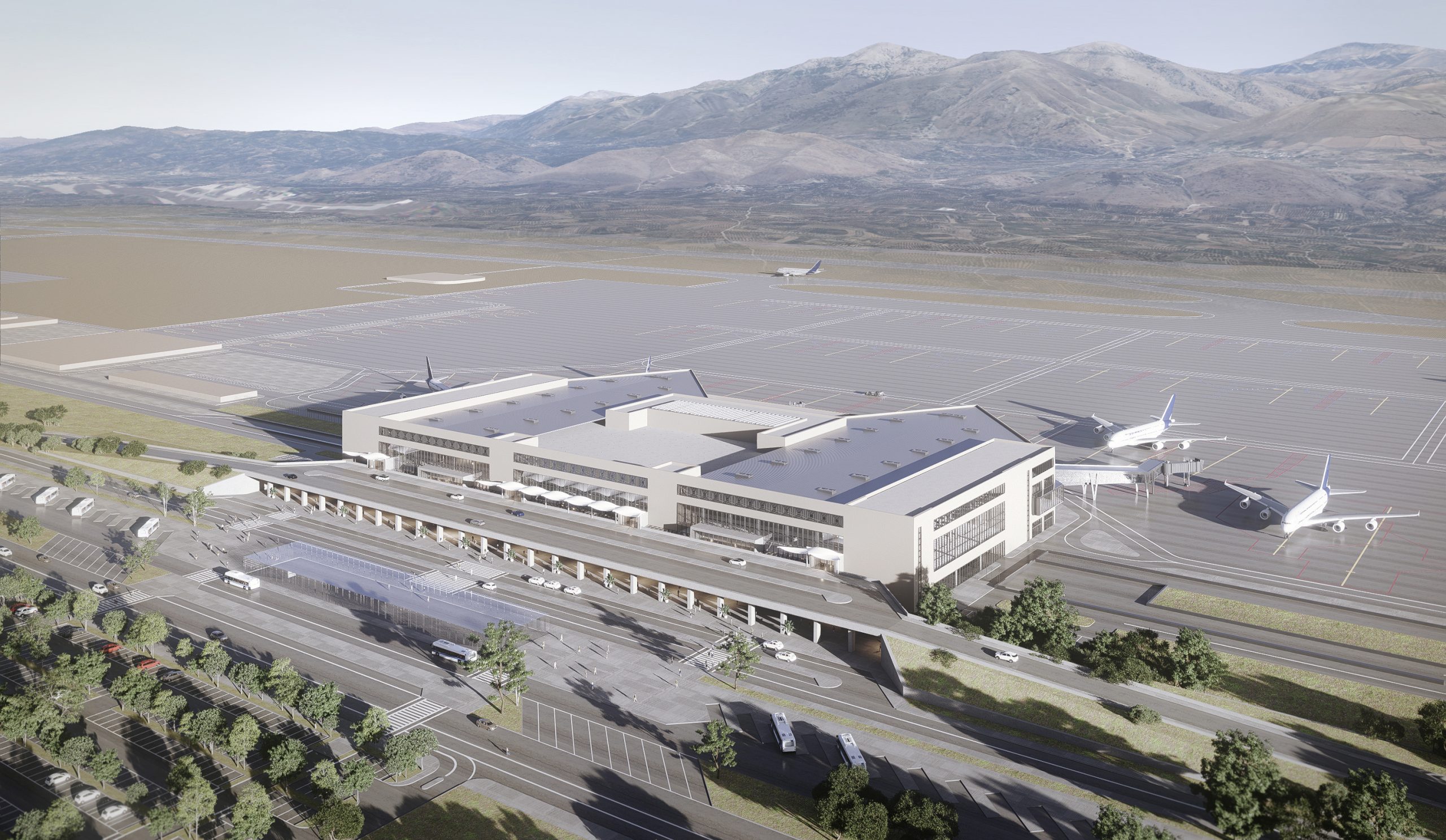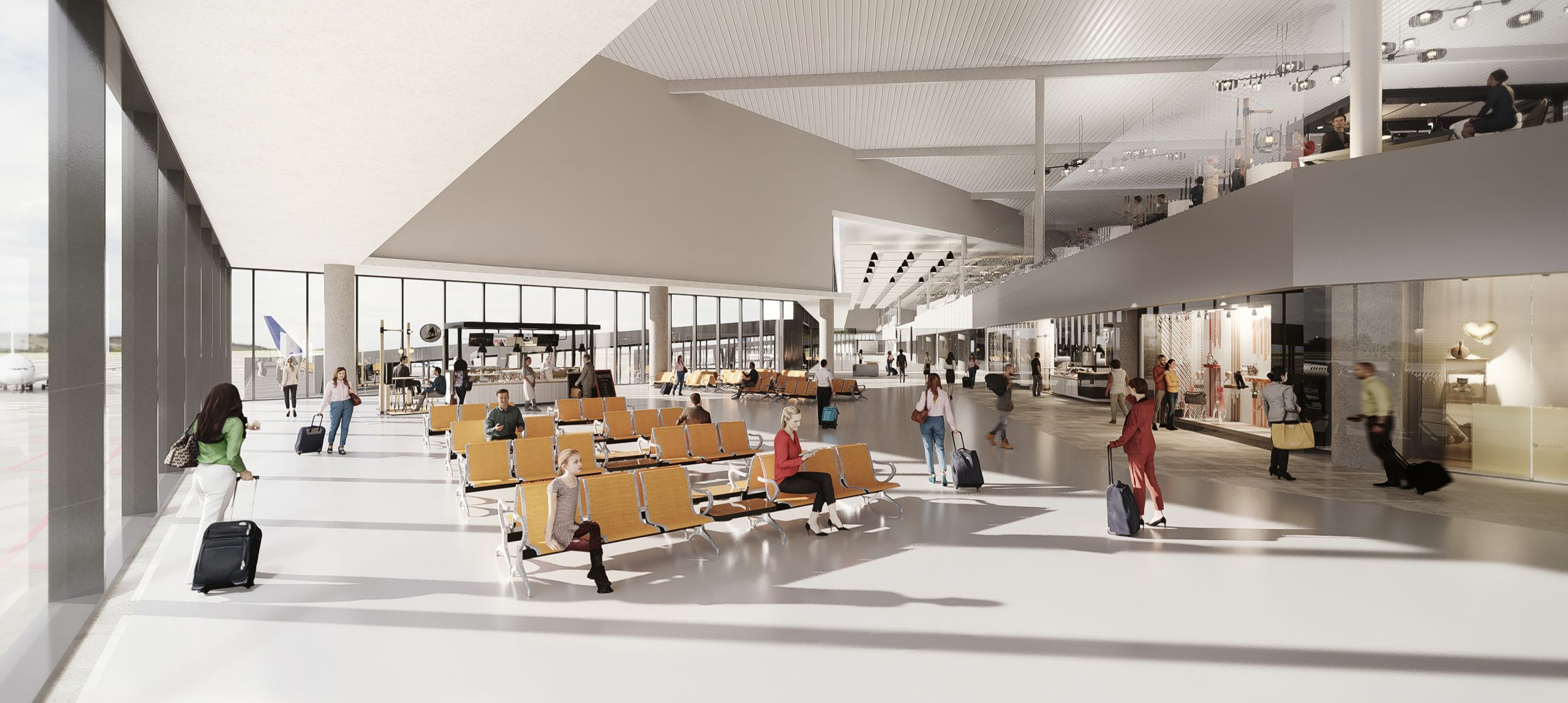2023: New year, new challenges
6 April 2023
Shares
For issue 1 of International Airport Review, Athanasios Vourdas, General Manager of International Airport Heraklion Crete (HER), explains about his vision for the future of travel through the new airport.
2022 was the year that closed the first cycle of the intense crisis in the transport sector that came about because of the pandemic. At the same time, it was accompanied by the energy crisis which was aggravated by Russia’s invasion of Ukraine and the ongoing war. The year ended having given another impetus to transportation, restoring a large part of the losses of the previous two years, but adding the need to reduce energy costs. In the case of the New Airport of Crete under construction, in Kastelli Heraklion, the end of 2022 found us with the finalised redesign of the project and with the consent of the Greek State, in order to meet all modern needs including those arising from the period of the health crisis, but also a project that respects the environment and ensures conditions of sustainability and social responsiveness.


Credit: International Airport Heraklion Crete
Accommodating an increase of passengers
Terminal floorspace is increased by 20,000m2 (the total capacity of the terminal under construction is 94,000m2) by adding larger passenger service areas, creating flexible design in the internal operation of the areas. The new terminal will have 10 passenger boarding bridges, 19 boarding gates and more than 13,000m2 of commercial area. Additionally, the accesses to arrivals and departures are upgraded, apron capacity is increased to accommodate 16 general aviation flights and 28 commercial flights. A special industrial zone is created for polluting activities (biological purification, fuel farm, water tanks) and the new infrastructure is designed to ensure environmental protection by increasing vehicle parking spaces by 40%, which includes 25% more electrical vehicle spaces. These are some of the new elements that make up the new airport of Crete’s redesigned project.
A new airport which aspires to welcome the first passengers at the beginning of 2027 and on its first day of operation will have the capacity to serve 11 million passengers annually, with expansion possibilities to meet the needs of 17 million passengers over 30 years.
This proves upgrading the transport sector in Greece is necessary and a prerequisite for our country to become, with even greater success, a strong transit hub for goods and people from the east to the west, and a very strong tourist destination”
At the same time, the operational redesign of the airport company is underway, to create conditions for the sustainable and ecological development of the entire airport area, with procedures for locating activities, exploiting the cultural heritage of Crete, highlighting Cretan food and culture and strengthening the role of the local community in the development of the wider area.
Our goal is for the new airport to provide the visitor with Cretan hospitality directly and effectively, with all the necessary information, as well as every alternative possibility, to make their stay more pleasant and more comfortable. This development completes the picture of reforming the transport landscape both for Crete and for Greece more broadly.


Credit: International Airport Heraklion Crete
A strong transit hub
It is worth noting that in 2022 Heraklion as a destination managed to recover 98% of the traffic of 2019 and the months from July to September had an increase of 4% compared to 2019.
This proves upgrading the transport sector in Greece is necessary and a prerequisite for our country to become, with even greater success, a strong transit hub for goods and people from the east to the west, and a very strong tourist destination. In recent years, leaps have been made in the development of modern road infrastructure, the modernisation of the existing railway network, the reform of existing airports and their modernisation, the start of the implementation of the new airport of Crete, the strengthening of electromobility, the provision of incentives for the modernisation of technology of freight transport vehicles, reducing both transport costs and the environmental footprint.
2023 could be the year that will trigger the return of transport to the forefront of interest around the world.
The environmental crisis and the energy crisis show the need to strengthen policies and investments related to new technologies in the transport sector, saving resources and implementing measures and methods to strengthen transport by mitigating negative impacts on the environment and people.
Our life does not exist without transport of people and goods. From our daily lives and the need for entertainment, to serving the needs of feeding and moving products and people all over the planet.
Their strengthening is necessary, but in a way that ensures their sustainable development and with infrastructure that respects the needs of people and the environment.
About the author


Thanos Vourdas is now CEO of the new Heraklion International Airport at Crete.
He was the General Secretary of the Ministry of Infrastructure and Transportation from 2017 until 2019. He has been Managing Director of ERGOSE S.A. from 2015 until 2017.
He obtained his degree of administration and production engineer from the Technical University of Crete.
Thanos was member of the working teams of the Ministry of Transportation and Communications for the Third Community Structural Fund and member of the teams for planning of the City Transport, for the Athens Olympic Games.
Are you ready to meet the expectations of Gen Z travellers? Join our virtual panel to discover how airports can engage the next generation of passengers.
16 Oct 2025 | 14:00 PM BST | FREE Virtual Panel Discussion
Join us for this interactive session where industry leaders will explore how airports are adapting to the needs and values of Gen Z, the first truly digital-native, socially conscious, and tech-savvy generation.
What You’ll Learn:
- What drives Gen Z travel decisions, and how to respond
- How to harness digital tools, social media, and mobile-first strategies
- How sustainability, inclusivity, and personalised experiences shape Gen Z’s airport expectations
- Real-world examples from leading airports that are successfully engaging younger travellers
Don’t miss your chance to learn from the airports leading this change – Register Now – It’s Free!













